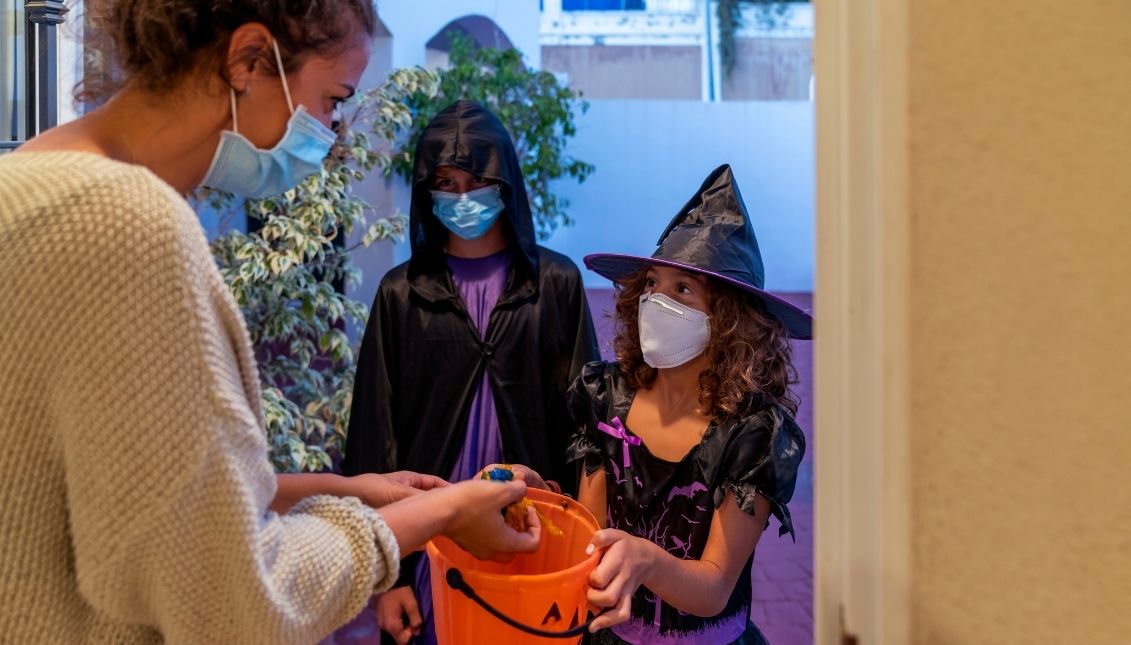
This year, children came out for 'trick or treating' by maintaining safety measures against COVID-19. Photo: Getty Images
The meaning behind Halloween and Day of the Dead celebrations
Oct. 31 and Nov. 1 have different meanings and are celebrated in different ways depending on the culture.
Oct. 31 is a date with great symbolism in various cultures around the world. From Celtic traditions, to celebrations honoring ancestors, the day is commemorated every year with different celebrations.
Many of the celebrations that take place during the last day of October date back to 'Samhain,' a Celtic holiday that celebrated the end of the harvest season and was also considered the 'Celtic New Year.'
Nowadays, Samhain continues to be celebrated by the followers of neo-pagan religious movements, such as Wiccan and Druidism, but it has also transcended in history within other cultures with celebrations such as Halloween and the Day of the Dead.
Halloween
The word Halloween is a shortened version of the phrase 'All Hallows' Eve,' and comes from the Celtic celebration of Samhain. The origin of the festival was in the United Kingdom, Ireland and northwestern France.
Halloween activities include trick-or-treating, attending costume parties, carving pumpkins into jack-o'-lanterns, lighting bonfires, bobbing for apples, playing fortune-telling games, visiting haunted attractions, telling scary stories and watching horror movies.
Nowadays, children, young people and adults dress up on the date as different characters and is also born as part of the Celtic tradition. At that time, the costumes were to confuse evil spirits, but today it is only part of the fun of the event.
Day of the Dead
In Mexico, the Day of the Dead is celebrated on Oct. 31, which was born as an activity in the Mesoamerican culture, by the inhabitants who were in the Mexican territory and gave a special meaning to death. The relevance gave birth to a Lord of Death called 'Mictlantecuhtli.'
With the arrival of the Spaniards, this celebration extended even more and became mestizo, as it received new Catholic elements and meanings, such as the cross of flowers, serving to honor and commemorate ancestors.
The Day of the Dead is considered by UNESCO as Intangible Cultural Heritage of Humanity, and is also recognized by all Mexicans as a symbol of national identity. Its arrival serves to increase tourism and the number of visitors to Mexico.
Nov. 1 marks the continuation of the Day of the Dead, where all the saints of the Church considered to have reached heaven are honored. In addition, people honor their ancestors who also reached the ascension to heaven.
The Saints' Day is also celebrated in other Latin American countries, such as Ecuador, Peru, Argentina, Chile and Colombia.
Bible Day
Different from the Celtic holiday celebrations, the Catholic Christian Church celebrates the printing of the first Bible: The Bear Bible, so called because the cover of this Bible had a bear eating honey from a honeycomb.
The "Bear Bible" was translated by Casiodoro de Reina. This translation, which was later revised by Cipriano de Valera, gave rise to the famous "Reina Valera" version that is widely used in Spanish-speaking countries.











LEAVE A COMMENT:
Join the discussion! Leave a comment.